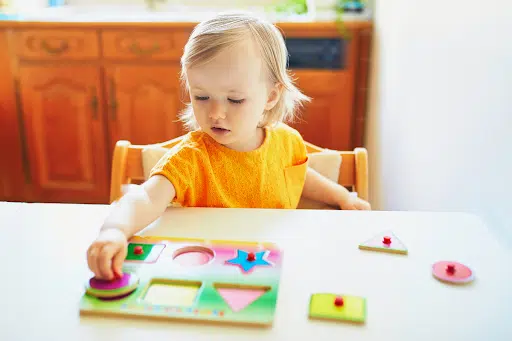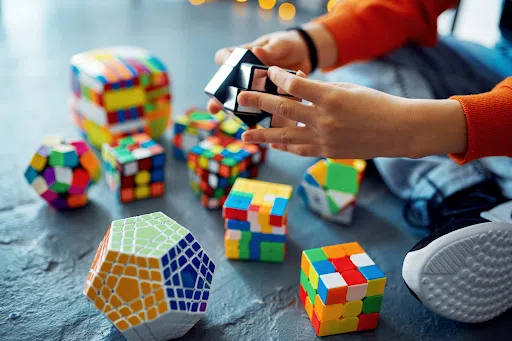
Helping kids become problem-solvers is vital to raising independent, critical thinkers. Let’s dive into why starting early matters and share some problem solving activities for kids you can try at home.
Problem-solving skills help children navigate daily challenges, from academic to personal relationships. Developing their problem-solving abilities is crucial to foster their adaptability, resourcefulness, and resilience. The steps involved in problem-solving are:
- Defining the problem
- Considering the possible solutions to that problem
- Weighing up solutions and selecting the most appropriate solution
- Implementing these solutions and assessing their outcomes
Problem solving skills better equip children to handle the complexities of the world around them. Developing problem-solving skills can boost creativity, adaptability, and the ability to remain composed under pressure. By nurturing these abilities, you empower your child to become a self-assured and capable adult. Kids need to learn these skills while their brain is developing and while learning is the fastest, easiest and most enjoyable.
Introducing problem-solving activities for kids at a young age:
Fosters critical thinking: Problem-solving activities help children analyse situations, identify possible solutions, and evaluate the best course of action, enhancing their critical thinking abilities.
Builds self-confidence: When children successfully solve problems, they gain a sense of accomplishment and self-confidence in their ability to tackle challenges.
Encourages creativity: Problem-solving often requires thinking outside the box, which nurtures a child’s imagination and creativity.
Enhances communication and collaboration: Many problem-solving activities involve working with others, helping children develop essential communication and teamwork skills.
Promotes adaptability and resilience: Problem-solving teaches children to cope with obstacles and adapt to new situations, fostering resilience and flexibility.
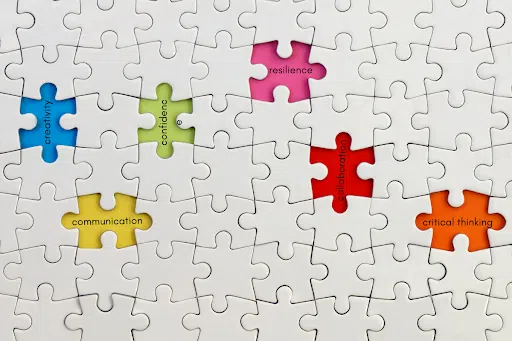
You can introduce problem-solving activities to children as young as 6 months of age. You’ll find a range of activities for babies and problem solving activities for 3-5 year olds and older.
Tangram Puzzles
Tangram puzzles are traditional Chinese dissection puzzles made up of seven flat geometric pieces called tans. They can be used to create various shapes, such as animals, people, letters, and other objects. Tangram puzzles are super versatile and a great problem-solving activity for preschoolers, toddlers and older kids. Assembling a tangram puzzle can be challenging, teaching children to be persistent, patient, and focused on finding solutions.
Try our Cho Cho Ban tangram puzzle. The idea is to fit all the pieces onto a given shape without leaving any gaps or overlapping them. As your child grows, the puzzles become more challenging, providing an excellent way to enhance their cognitive and problem-solving skills. The product is versatile and can adapt to the child’s age and level, making it an excellent long-term investment. With the hardest puzzles incorporating all seven polygons, even adults can enjoy the challenge and have a lot of fun!
The Lego Challenge
The lego challenge is a fun problem solving activity for preschoolers and older kids. Give your child a random assortment of Lego bricks and present them with a specific building challenge, such as creating a bridge, a tower, or an animal. This activity promotes creativity, encourages out-of-the-box thinking, and hones spatial reasoning skills. Increase the challenge level by adding a time limit to the build as well.
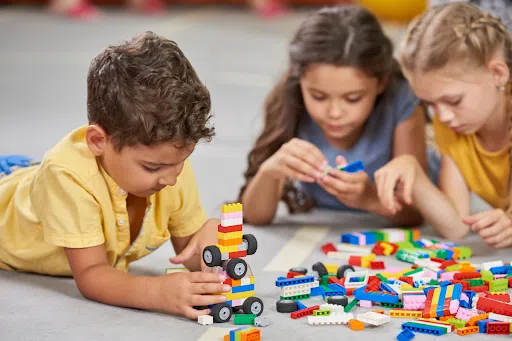
Treasure Hunt
Get creative with problem-solving games for kids and design a treasure hunt for your child, complete with clues, riddles, or puzzles to solve. This activity requires problem-solving skills and helps develop reading comprehension and navigation abilities.
Memory Games
Memory problem solving games for kids, such as matching pairs of cards or recalling a sequence of objects, help children improve their concentration, memory, and problem-solving skills. They can also be easily adapted to suit different ages and interests.
Cause and Effect Exploration (6 months old):
Provide your baby with age-appropriate toys or household items that create a noticeable effect when manipulated, such as a rattle, a soft squeaky toy, or a small container with a lid.
Encourage your baby to explore these items and observe the effects of their actions, like shaking the rattle to produce noise or opening and closing the container’s lid. This activity helps babies develop an understanding of cause and effect relationships, laying the foundation for problem-solving skills.
Stacking and Nesting Cup (6 months old):
Give your baby a set of stacking cups. Show them how to stack the cups on top of one another or nest them inside each other. This activity helps develop hand-eye coordination and problem-solving abilities as they figure out how to manipulate the cups and understand their relative sizes.
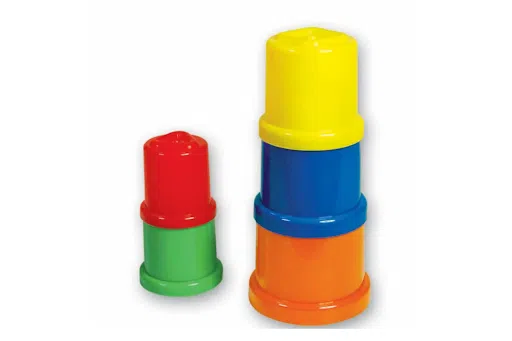
DIY Obstacle Course
Create a home obstacle course using furniture, pillows, and other household items. Encourage your child to navigate through the course, overcoming obstacles and challenges along the way. This activity fosters physical coordination, spatial awareness, and strategic thinking.
Storytelling Challenge
This problem-solving storytelling activity promotes creative thinking, adaptability, and problem-solving as children must figure out how to incorporate unrelated objects into a coherent and engaging story.
You’ll need a collection of random household items (e.g., a spoon, a toy car, a book, a hat, etc.)
How to play:
- Choose a few items (3-5) from the collection and lay them out before your child.
- Explain that the goal is to create a story involving all the displayed items.
- Start the story by giving a basic scenario, like “Once upon a time, in a small village, there lived a clever cat named Fluffy.”
- Encourage your child to continue the story by incorporating the items individually, using their imagination and problem-solving skills to find creative ways to include each object in the narrative.
- Take turns with your child, adding to the story and using the items as you progress. You can provide guidance or ask questions to help them brainstorm ideas for incorporating the objects.
- After the story is complete, discuss your child’s creative solutions to include the items in the narrative and praise their problem-solving efforts.
“What Would You Do?” Scenarios
Present your child with hypothetical scenarios that require them to think critically and come up with solutions. For example, ask them what they would do if they were lost in a grocery store or if they found a lost pet. This activity encourages critical thinking, decision-making, and helps children understand real-life situations and consequences.
Board Games and Strategy Games
Board games and strategy games, such as chess, checkers, or Monopoly, offer a fun and engaging way for older children to develop their problem-solving skills. These games teach kids about planning, decision-making, and adapting to changing circumstances.
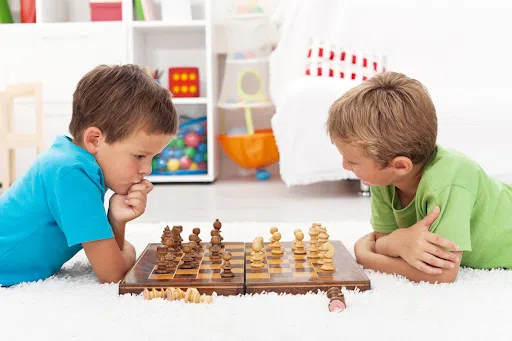
Group Problem Solving Activities
Organise group activities with your child and their friends, such as a group puzzle, escape room-style challenges, or collaborative building projects. These activities promote teamwork, communication, and collective problem-solving.
Shichida Australia offers a gateway to problem solving by introducing your child to a range of age-appropriate problem solving activities.
We provide more straightforward tasks like shape puzzles, stacking games, and sorting exercises for the little ones. As for older kids and those eager for a challenge, we give trickier options like tangram puzzles, worksheets, and mazes. Discover more about Shichida Australia early learning program today.
